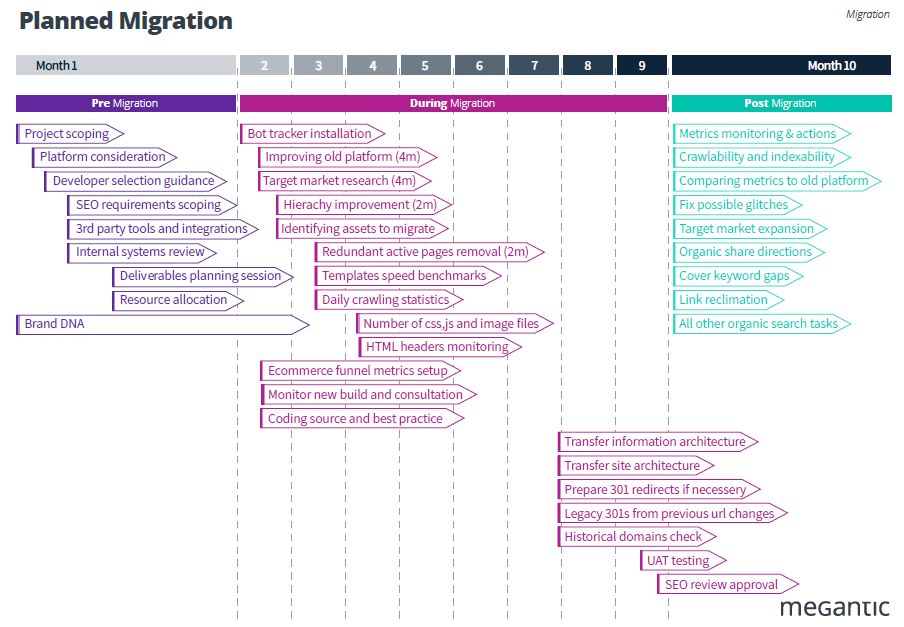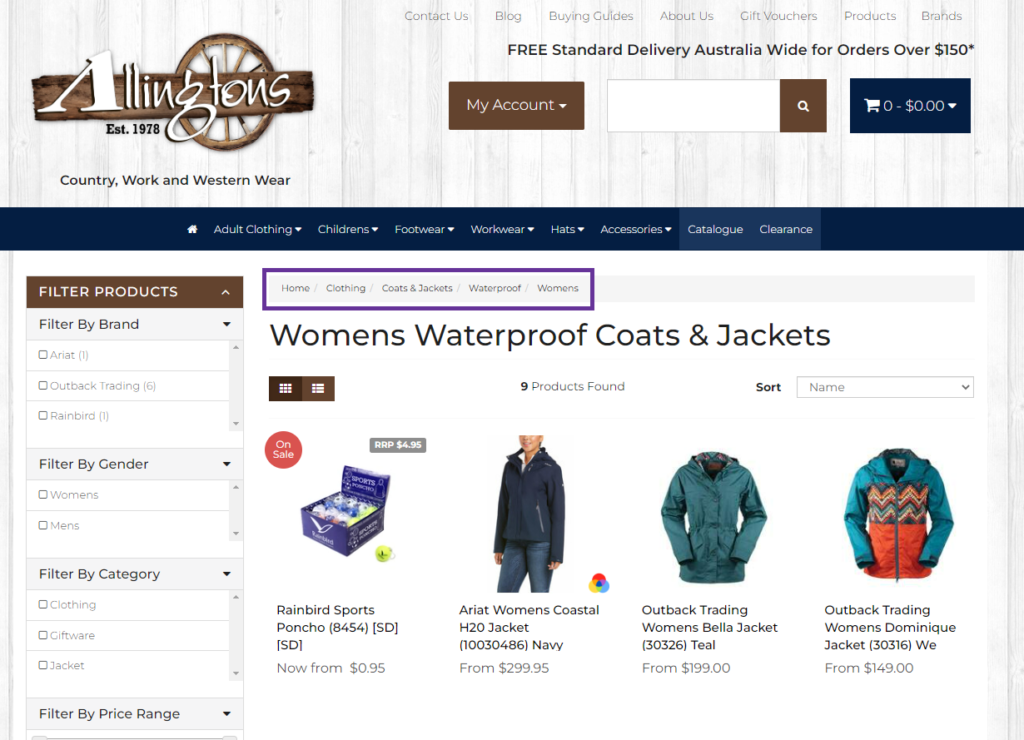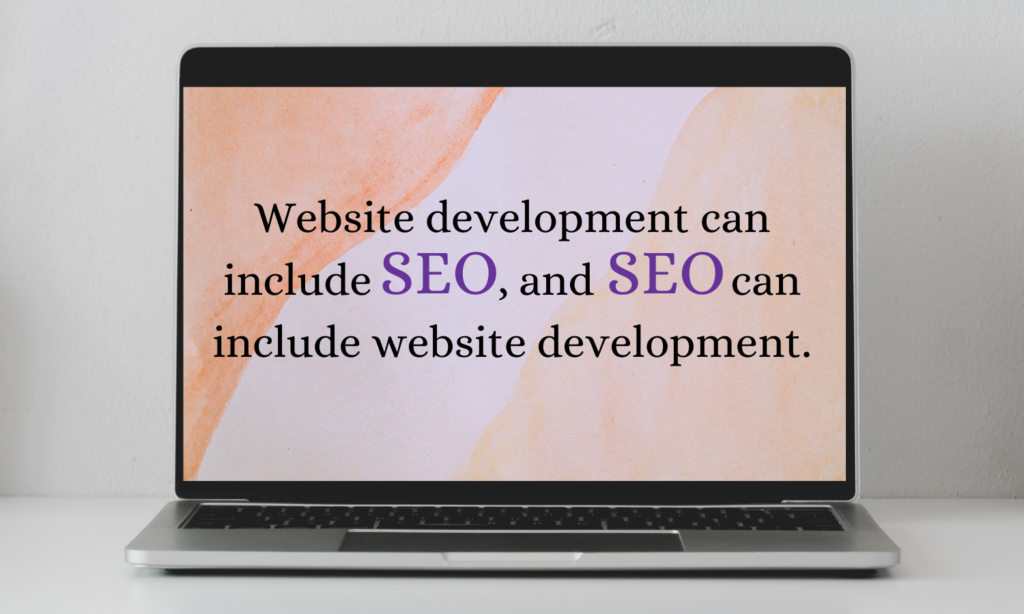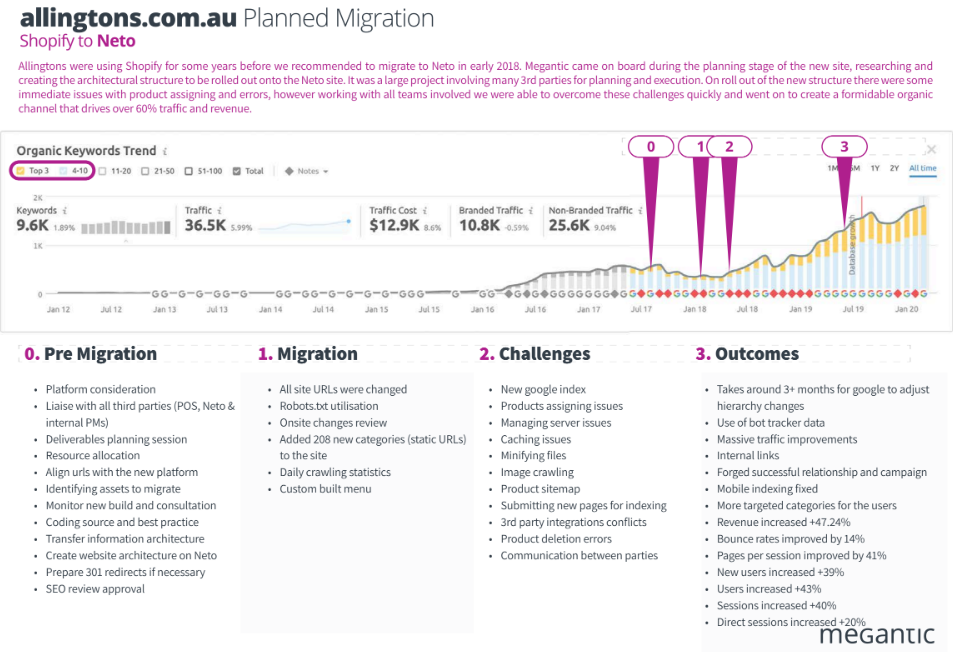The Migration Process | Site Migrations 101
23 May 2022 Blog Posts
Website migrations are where website owners will move their website to a new CMS (content management system) or eCommerce platform.
Before reading this post, see What is a Website Migration to understand more about the thought process of choosing to move to a new platform.
Contents
- What is a planned website migration?
- The website migration timeline
- How to effectively migrate your website to a new platform
- Why it is important to work with an SEO company alongside your website developer
- Case Study: Migrating Allingtons Outpost from Shopify to Neto
What is a planned website migration?
A planned website migration is a website migration that is just beginning. You may have not yet started the migration process and are beginning to think about the idea and how it will affect your eCommerce store.
Some things that you should consider before attempting to migrate your website to a new platform are where, when, who and why.
Where: Which platform will you move your site to? Some of the most popular CMS platforms are Neto, Spotify, Magento, BigCommerce and WooCommerce.
When: What time of the year will you begin the migration? Site migrations can be difficult and there may be disruptions to your website. Ensure that you do not plan the site migration to be during a highly-profitable time or when your team will be on holidays, such as Christmas or Black Friday.
Who: Who will be helping you with your website migration? Typically, website developers will conduct the site migration, however we have found it to be very important to have an SEO specialist also work on your site migration.
Why: Why are you wanting to migrate your website to a new platform? Make a list of the reasons why and keep these in mind during the migration process. The process can be time-consuming and expensive, but the benefits will outweigh the negatives if the migration is successful.
The website migration timeline
Stage 1: Pre-migration
The pre-migration takes place during the first month. This is where we perform project scoping, SEO requirements scoping and review your internal systems. We also ensure all third party tools and integrations are working properly and conduct a meeting where we discuss resource allocation and deliverables. We ensure we understand the entire brand DNA and target customer.
Stage 2: Migration
The migration itself typically takes us nine months to fully complete. This involves installing a bot tracker, target market research, improving the old platform and improving the site hierarchy. We view crawling statistics daily to ensure success, and monitor HTML headers and the new build. It is important to keep the lines of communication during this time to stay ahead of any problems that may arise. During the second half of this stage, we will transfer the information and site architecture and review any old 301 redirects while creating new redirects.
Stage 3: Post-migration
Post-migration is during the tenth month and onwards. Here, we monitor metrics and analytics of the new platform, comparing results to the old platform. This ensures that we promptly pick up any glitches (such as missed redirects). We also cover keyword gaps, link reclamation and complete any other organic search tasks that will be beneficial to the new site.

How to effectively migrate your website to a new platform
To migrate your website effectively to a new platform, it is important that you follow all SEO best practices.
1. Understand why you are migrating your website to a new CMS. What do you hope to gain from this?
2. Set priorities for the new website’s content and site architecture.
3. Decide what needs to be migrated to the new CMS. To do this, crawl the existing site.
4. Create a site map. A site map is a list of all the pages on a website. They are ranked, with the homepage on top, categories next, subcategories underneath, etc. Here is an example of a sitemap visible from the Allington’s Outpost website:

In this example, the topmost category is the homepage. In this particular vertical, we can see “Clothing”, followed by “Coats & Jackets”, then “Waterproof” and finally “Womens”. The final level of this category is the specific product, for example, Ariat Womens Casual H20 Jacket.
This vertical can be found at: www.allingtons.com.au/casual/coats-jackets/waterproof/womens/
5. Launch the migration.
6. Crawl the new site, monitor the performance and fix any mistakes that may have been made, such as broken links.
Why it is important to work with an SEO company alongside your website developer
Put simply, it is important to work with an SEO company alongside your website developer because they both have different values.
In an ideal world, website developers would have a sound knowledge of SEO and be able to implement all best practices every step of the way. Unfortunately this is not the case.
We have seen first hand the amount of websites that have poor SEO due to inadequate website development and migrations.
Website development is about creating a website that is functional and attractive. Search engine optimisation is optimising a website so that it is attractive to Google and ranks highly in search results.
Work with both a website developer and a SEO specialist for maximum benefits.

Website development can include SEO, and SEO can include website development.
Case Study: Migrating Allingtons Outpost from Shopify to Neto
Allingtons Outpost were using Shopify for a few years before we recommended they migrate to Neto in early 2018. Megantic came on board during the planning stage of the new site. We researched and created the architectural structure that was to be rolled out onto the Neto site.
This was a large project that involved many third parties for planning and execution. Upon rolling out our new structure, there were some immediate issues with product assigning and errors codes, such as 401 errors and 301 errors.
401 errors are where the request could not be completed. For example, an item page not opening after clicking on a specific product.
301 errors are an error with the permanent redirection of a page. For example:
The old website page for a specific product (www.oldwebsite.com/product1) should redirect to the new website page for the same product (www.newwebsite.com/product1). If there is a problem with this occurring, then a 301 error is produced for the website visitor.
However by working with all teams involved, we were able to overcome these challenges quickly and went on to create a formidable organic channel that drives over 60% traffic and revenue.
It took around three months for Google to adjust to the hierarchy changes and to fully understand the changes that were made to the site. After that stage, Allingtons Outpost has continued to grow, with revenue increasing by 47%, new users by 39% and sessions (traffic) by 40%.

The migration process can be time consuming and may involve challenges. However, with the right agency partners, your website migration can be as successful as Allington Outpost’s.





